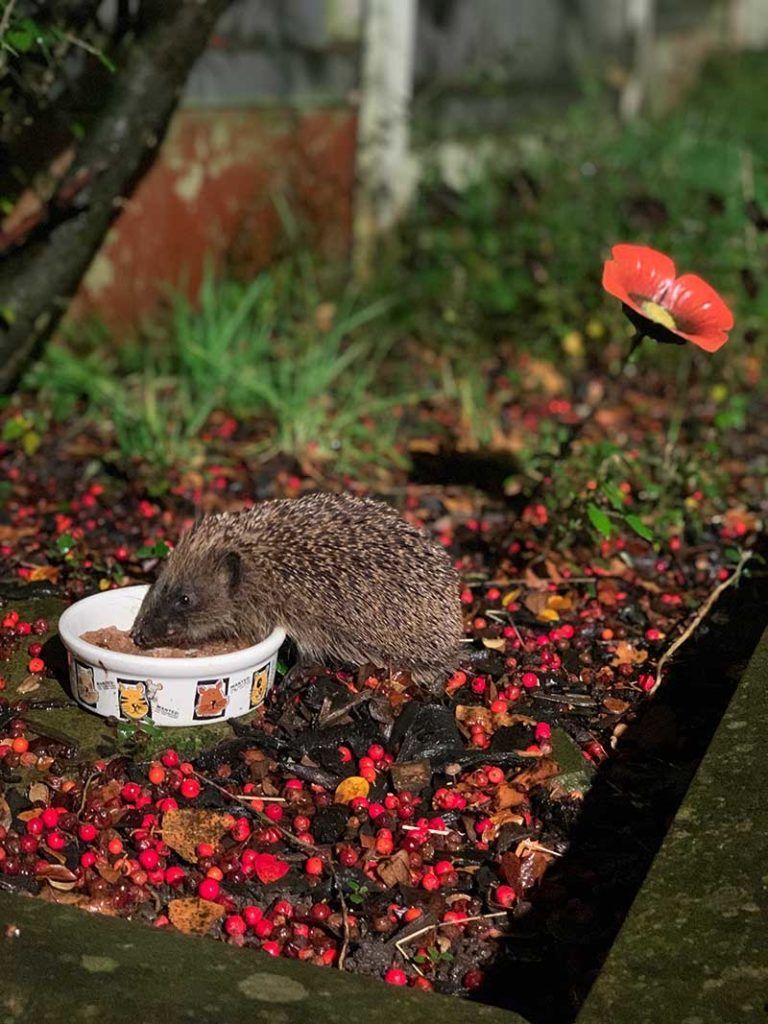We know very little about hibernation in those British mammals that use this strategy to survive winter periods when food is scarce. It’s possibly a vulnerable time for these animals. Both hedgehogs and hazel dormice hibernate on the ground. This helps them keep their temperatures and humidity levels relatively stable. However, we do know that hibernators rouse periodically, sometimes changing nest sites. To survive many months without food, these animals need to build up considerable fat reserves before going into their deep winter sleep.
Does putting food out for hedgehogs have an impact on them?

Hedgehogs are increasingly becoming urbanised. Large swathes of the countryside have become pretty hostile places, with few if any safe nesting and good foraging places. In contrast, our gardens and urban green spaces often provide everything a hedgehog needs. Many people even put out food for hedgehogs, foxes, birds and other wildlife.
Whilst this may appear to be a good strategy, we don’t know what impact it has on hedgehogs. Abi Gazzard, who is completing her PhD at the University of Reading, decided to find out. She called for volunteers from the general public to put footprint tracking tunnels in their gardens for twenty weeks to see how active hedgehogs were over winter. And what, if any, impact supplementary feeding may have on them.
Activity during hibernation
Abi’s volunteers noted whether there were new footprints in the tunnels each week throughout the winter period. Whilst these weekly records showed that activity dropped substantially from January through to March, there was evidence of hedgehogs moving about throughout the hibernation period. And there was significantly more activity in gardens where householders had put food out previously for hedgehogs.
What does this mean? Abi says that these results are not clear. Does putting out food encourage hedgehogs to remain active for longer or help them put on enough weight to be better prepared? Hibernation appears to be trigged by environmental cues with larger hedgehogs going into hibernation first. Abi’s findings suggest that putting out food could be increasing levels of activity during the winter when hedgehogs should be hibernating. However, it could enable young of the year, especially from late litters, put on enough fat to successfully survive the winter. The next step will be to find out if winter activity is spread across hedgehogs of all ages, or predominantly just young hogs. In the meantime, please don’t stop putting food out for hedgehogs. We know that feeding them the right food throughout the year, and providing water too, helps these vulnerable animals, especially in areas where wild invertebrates supplies may not be as plentiful as they once were.
Learn more about Abi’s project on urban hedgehogs:
Photo credits Louise Thompson, Graeme Jackson.
